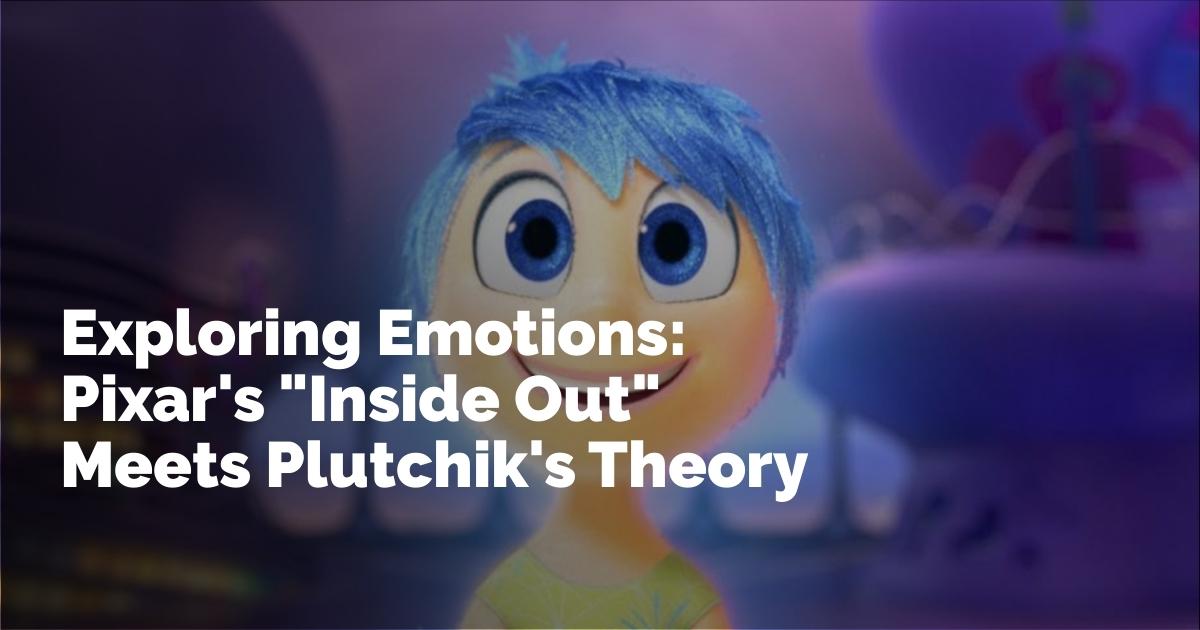Pixar's "Inside Out" and Plutchik’s Theory of Emotions
Pixar’s 2015 release, "Inside Out," revolutionized children’s cinema by diving deep into the exploration of emotional maturity. The film was not just a mere children’s story; it provided profound insight into the psychological experiences of growing up. By centering on the journey of Riley, an 11-year-old girl grappling with her evolving identity, "Inside Out" marked a departure from the surface-level emotional narratives typical of children's movies. It offered a sophisticated portrayal of the challenges and intricacies of emotional growth.
In this innovative depiction of emotions, "Inside Out" drew inspiration from the theories of psychologist Robert Plutchik, whose concepts on emotions laid the foundation for understanding universal, core human feelings. Plutchik's framework included eight primary emotions—anger, fear, sadness, disgust, surprise, anticipation, trust, and joy—fundamental responses that are biologically ingrained into the human psyche. The film cleverly incorporated five of these emotions, transforming them into colorful and engaging characters that guide Riley through her developmental changes.
While "Inside Out" simplified certain elements of Plutchik’s complex theory to suit its young audience, it maintained subtle nods to the intricacies of emotional experiences. Particularly, the film illustrated the pairing of emotions as opposites, like happiness and sadness, and echoed the concept of evolutionary adaptiveness, where emotions like fear are shown to trigger protective responses. It ventured into the spectrum of emotional intensity and hinted at the phenomenon of emotions blending, crafting nuanced feelings akin to the mixing of colors.
The Importance of Emotional Competence
Aligned with studies in developmental psychology, "Inside Out" emphasized the critical role that emotional competence plays in our lives. Emotional competence, or the ability to comprehend and control one's emotions while empathizing with others, is a vital predictor of success in social and academic arenas. The film depicted young children's capacity to grasp, express, and manage emotions—a process influenced by innate temperament and the cultivation of social-emotional skills within familial and societal frameworks.
What truly set "Inside Out" apart was its profound tackling of the trials of growing up and the nurturing of emotional competence from a young age. By personifying emotions as distinct characters—from the exuberant yellow Joy to the somber blue Sadness—the film gave viewers an accessible yet meaningful way to relate to and understand their own emotional landscapes.
Innovative Depictions of Emotions and Memory
Another noteworthy aspect of "Inside Out" was its imaginative depiction of complex psychological concepts. For instance, the film portrayed memories as vivid, colored orbs and introduced the notion of a literal "train of thought," offering insights into how experiences and emotions are processed. Such depictions challenged traditional notions that separate emotion and logic, instead illustrating how emotions are central to decision-making.
Research on individuals with damage to the ventromedial prefrontal cortex underscores the essential nature of emotions in interpreting emotional cues, evaluating choices, and driving decisions. These studies indicate that emotions serve as crucial indicators, directing our attention and choices based on our values and past experiences. "Inside Out" subtlely highlighted this interaction between emotion and cognition, showcasing how the emotional characters influenced Riley's decisions and offering room for further exploration, perhaps in a potential sequel, "Inside Out 2."
Insights for Future Installments
As anticipation builds for the June 2024 release of "Inside Out 2," there is great excitement around how Pixar will continue their exploration of emotions. The sequel is poised to delve deeper into human emotions as Riley enters her tumultuous teenage years. Her emotional headquarters will undergo a renovation, with the introduction of new emotions like Anxiety, providing fresh ground for storytelling. With the diverse directions available for future films in the series, "Inside Out" sparks an ongoing conversation about mental health in a timely and engaging manner.
In conclusion, the impact of "Inside Out" is multifaceted; it elegantly combines entertainment with education, enlightening audiences about the nuanced nature of emotions. By drawing on established psychological theories and translating them into an accessible medium, Pixar not only created a cinematic masterpiece but also contributed significantly to the discourse on emotional intelligence—a valuable skill for success in today’s complex world. Through this film, viewers of all ages are reminded of the inherent power of emotions in shaping our lives and experiences, inviting reflection and empathy for ourselves and others.
출처 : Original Source

